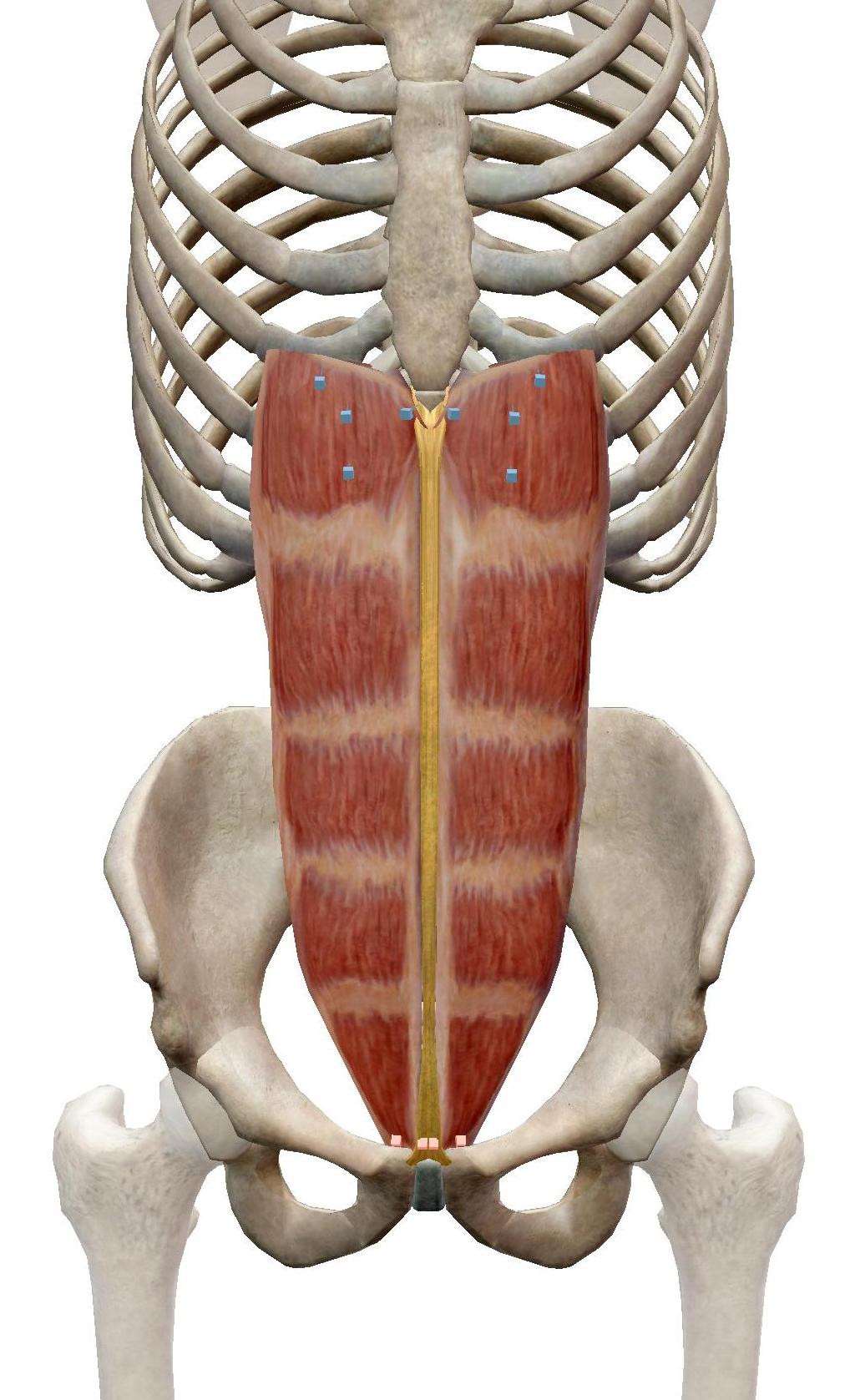What is Rectus Diastasis and why does it happen?
This is the separation of the rectus abdominis muscle at the linea alba – the central line of connective fascia which runs straight down your belly. Other muscles, connective tissue and fascia in the abdominal wall are also affected, but rectus abdominis (the one that can look like a six-pack) are the ones people commonly refer to.
In pregnancy it happens because of the growth of your baby in the uterus forces the abdominal region to stretch and bulge forwards. It isn’t until after birth that you can start the healing process, but if your core and pelvic floor muscles are in better condition prenatal then I believe you will have a head start. It’s like taking two steps forward and one back: if you never made any steps forwards then the one backwards will put you into a negative position. Prevention and prehab are always better.
When is Rectus Diastasis problematic?

rectus abdominis muscles with linea alba showing as central line
Because the muscle and linea alba have become separated, there is loss of function and form. Nobody wants to have abdominal muscles which aren’t functional, let alone a bulging belly. One of the key issues I’ve come across with postnatal clients is that they want their belly back – a flatter, nicer to look at abdominal region with less lumps and bumps.
When tested, if the muscles at the midline remain separated more than about 2-2.5 finger widths or 2cm then it is considered problematic. There will be a reduction in the strength of the abdominal area, and, as a result, you are likely to experience low back pain and pelvic instability, and potentially digestive problems.
Separated muscles = weak muscles = pain & discomfort
If the abdominal muscles are weakened then they cannot do their job, which is to support the internal organs by compressing the abdominal wall. Unfortunately, without the correct guidance, exercises and healing the area can remain separated with your health being compromised.
How to heal Rectus Diastasis?
This is such a large topic and one which cannot be covered by a few words in this article. There is also no one-treatment-plan-fits-all, since we’re all unique with our own combination of circumstances: age, nutrition, fitness and level of motivation to get this fixed. The best option is to have your diastasis checked by a professional (we can do this) who can then guide you through the healing process and appropriate exercises for you. A few pointers to consider for now:
- Roll out of bed, or when standing from a laying position – be sure to roll in both directions so you aren’t always rolling to the same side: think balance. You must do this to avoid increasing the pressure in your abdomen and pushing the area forwards as you get up.
- Good hydration and nutrition: collagen is approx. 70% water so it needs ‘feeding’ to heal.
- Speak to a professional and have a tailor made restorative programme designed for you. Not only are your physical circumstances unique to you, but your lifestyle, family and movement patterns (ie. what you do on a daily basis) are unique to you as well.
What to avoid?
- lifting or carrying heavy items.
- abdominal exercises such as crunches and oblique twists which cause abdominal bulging. These exercises put too much pressure on the abdominal wall and diastasis as it’s working hard to heal and come back together. Think about a paper cut on your knuckle – every time you bend your knuckle it can re-open the wound. The fascia and tissues are weaker and need nurturing to heal.
- any movement which causes an increase in abdominal pressure, including the ‘plank’.
- twisting movements, such as the triangle pose in yoga or ‘bicycle’ crunches.
Finally…
Please don’t despair if you have a rectus diastasis. Even if you’ve had issues for many years, multiple pregnancy or c-section births, there is something that can be done to close the gap and get your body functional and fit. Lynne has specialist pre/postnatal experience in massage and remedial therapy, as well as being a qualified personal trainer.
A word of caution: if you have any bulging protusions from your abdomen region (eg a hernia), or if you have a severe cough/sneeze please go and see your GP.
Click the icon below to find out more about all of our Pregnancy Fitness services:




